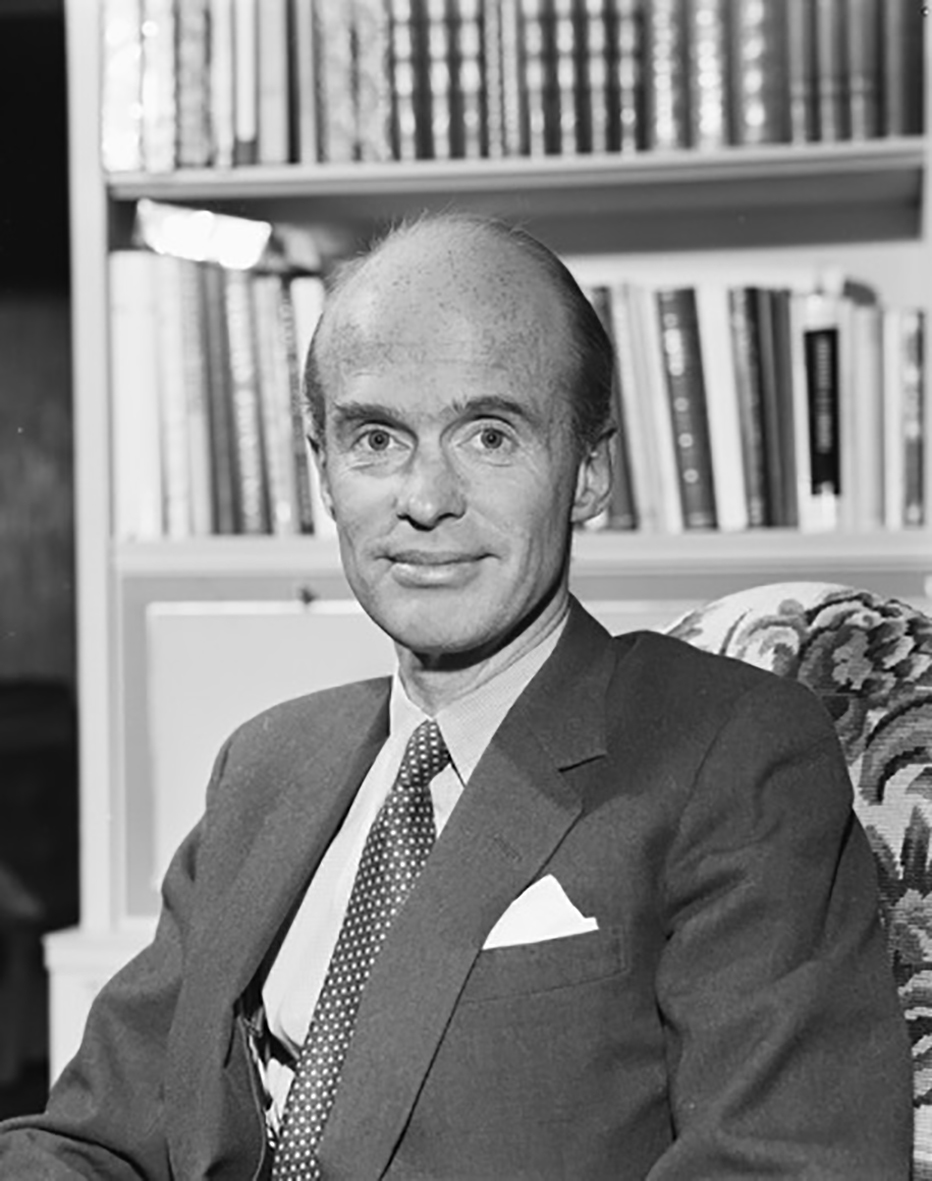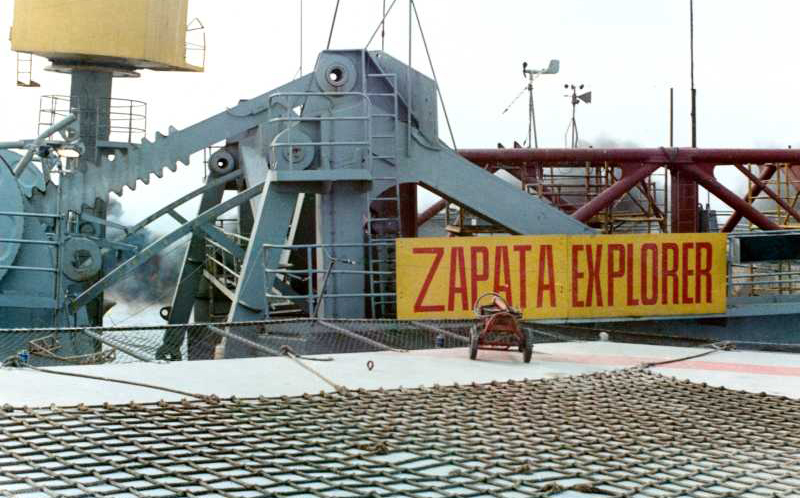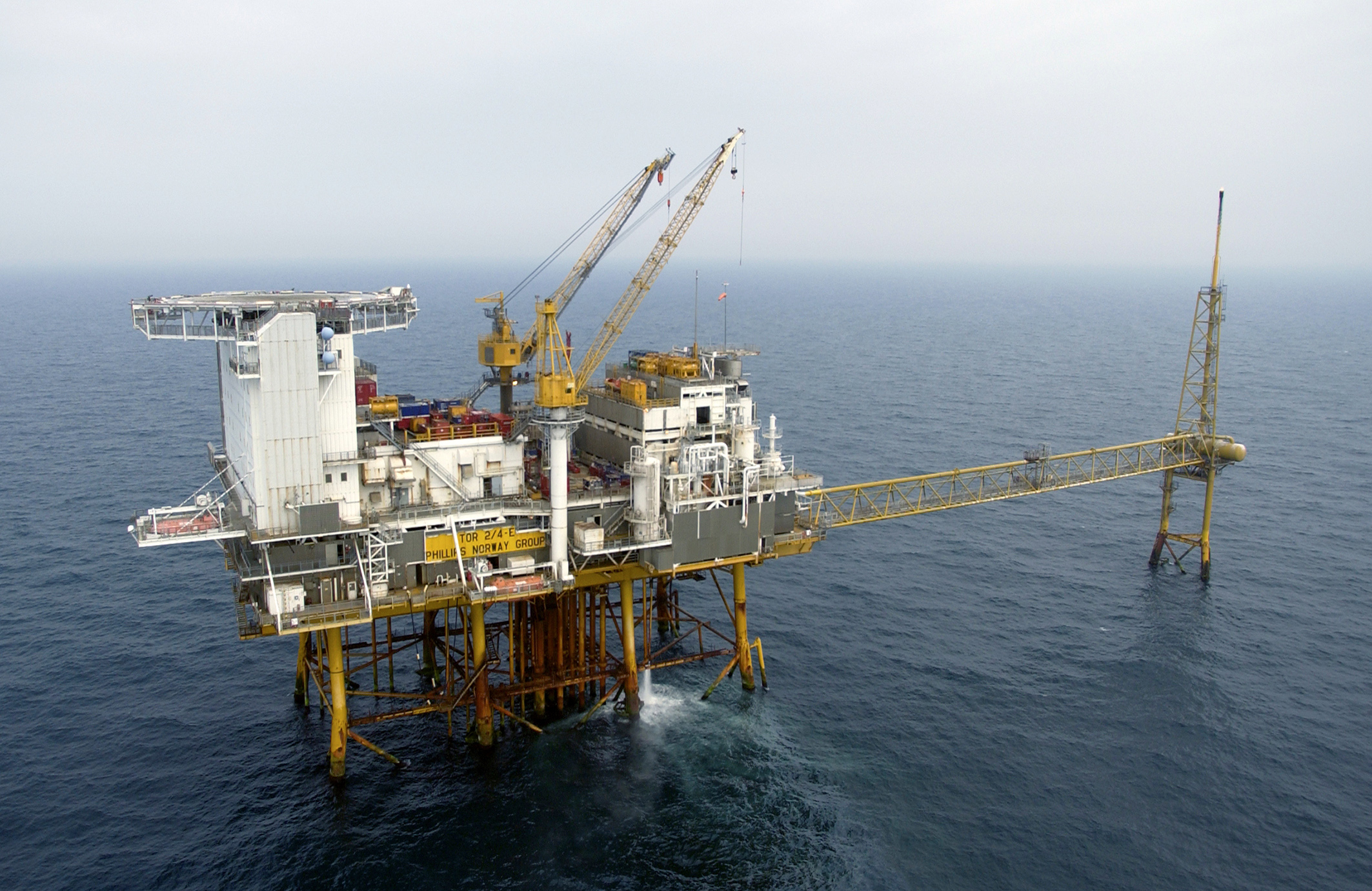The creation of Saga Petroleum

The idea of a larger Norwegian company had emerged as early as January 1970 at a meeting in the Ministry of Industry’s oil office. Those attending were Norsk Hydro, Noco and Den norske Creditbank (DnC), which had acquired a majority shareholding in the small private Syracuse Oil Norge company in 1967.
Both Hydro and Noco expressed interest in joining forces to create a large Norwegian company for exploring Norway’s continental shelf (NCS) above the 62nd parallel, which marked the northern limit of the North Sea. But the initiative was not taken any further.[REMOVE]Fotnote: Hanisch, Tore Jørgen and Nerheim, Gunnar (1993). Norsk oljehistorie, bind 1, Fra vantro til overmot, 176.
One reason was that the Norwegian government secretly acquired 51 per cent of the shares in Hydro, making it majority state-owned. This company was also favourably positioned after acquiring a share in the big Ekofisk field through an exchange of interests between the Petronord group and Phillips Petroleum.
Another positive aspect for Hydro was that its collaboration agreement with the French oil companies in Petronord lasted only for 12 years. From 1977, the Norwegian group would be free to apply for licences both above and below the 62nd parallel if it wanted.
Noco had no such opportunities under its 1965 agreement with Amoco, Texas Eastern and Amerada, which limited its ability to act alone on the NCS below the 62nd parallel. The consortium members were not permitted to compete with the AmocoNoco group.
 Noco og opprettelsen av Saga
Noco og opprettelsen av SagaFred Olsen, then chair of Noco, has commented: “We [Noco] were locked in with the three. That was all right in its way, but we had to do something more, particularly where [the NCS] above the 62nd parallel was concerned. We had to unite the whole of Norway and [gather] a lot of money.”[REMOVE]Fotnote: Fred Olsen in an interview with Sigvart Østrem, Norwegian Broadcasting Corporation (NRK), 8 June 2009.
Nocoto brings together 50 Norwegian companies
Noco accordingly only had opportunities to apply for new exploration acreage above the 62nd parallel, but when blocks there would be put on offer was uncertain.
The Noco partners and other Norwegian industrial interests were keen to make a bigger commitment at once, and a deed was drawn up for a new limited partnership in November 1970.
Circulated for comment to Noco’s participants, this document attracted a very positive response, and a number of others indicated their desire to participate in the new company.
When the deadline expired on 12 March 1971, binding subscriptions totalling NOK 444 million had been received from 78 companies – about half of them involved in shipping.
Many were very interested in subscribing even more, and the total capital raised when the new company was formally established on 31 March came to NOK 683 million.[REMOVE]Fotnote: Hanisch, Tore Jørgen and Nerheim, Gunnar (1993). Norsk oljehistorie, bind 1, Fra vantro til overmot, 177. The name Nocoto (ie, Nocotwo) was adopted.
So Norway’s private corporate sector was definitely interested in participating in the oil business. The problem was that the new consortium had nothing to do.
The government wanted to conduct seismic surveying itself above the 62nd parallel, and blocks there were not expected to be put on offer until 1973–75 – and were actually delayed until 1979.
Nocoto then sought to secure an involvement in the UK sector, but the British put a stop to this by saying that any participation had to be matched by corresponding openings for their companies on the Norwegian side.
The government possessed limited powers to intervene against the clause which bound Noco in relation to its US partners in AmocoNoco, but no such action took place.
Another solution was found instead. If Noco could secure some specified blocks for the Amoco group in the upcoming licensing negotiations, the latter would be willing to release the Norwegians from the exclusiveness clause. But a new licensing round was delayed. The government first wanted to establish a new state oil company, which was achieved with a Storting vote on 14 June 1972.
Nils Gulnes at the Ministry of Industry told Noco at a meeting in November 1971 that the negotiating position of private players would be weakened once the state company was in place. Hydro also held better cards than Noco and Nocoto.
Neither Gulnes nor industry minister Finn Lied were entirely negative. But if the private sector wanted to have any chance at all, they had to concentrate their resources as much as possible – and be independent.[REMOVE]Fotnote: Hanisch, Tore Jørgen and Nerheim, Gunnar (1993). Norsk oljehistorie, bind 1, Fra vantro til overmot, 180.
Saga Petroleum – Norway’s only private oil company
Noco’s partners were shocked by this discriminatory treatment, but had no choice but to fall in line with the government. On 26 February 1972, Noco, Nocoto and the small private Pelican, Polaris and Syracuse oil companies combined forces.[REMOVE]Fotnote: Helle, Egil, “Saga’s role in Norwegian oil history”, in Glenne, Bjørn (ed), 1997, The Saga of Saga, 1972-1997 , 1997, 19.
“AP [the Labour Party] and LO [the Norwegian Confederation of Trade Unions] liked large companies they had control over,” was Olsen’s view. He also felt that the company could no longer be called Nocoto.
An idea struck him. His family had a substantial shareholding in watchmaker Timex, and one of its products was known as Saga. What about that for a name?
Adopting an old Norse term for a historical account would symbolise the significance of the oil industry in Norwegian history. The new company was accordingly called Saga Petroleum.[REMOVE]Fotnote: Fred Olsen in an interview with Sigvart Østrem, Norwegian Broadcasting Corporation (NRK), 8 June 2009.
Securing awards in the first licensing round after its establishment was virtually a matter of life or death for Saga. But Noco’s tie to the AmocoNoco group remained a problem.
The question was whether a solution acceptable to the American partners could be found. One option was to give them an interest in blocks 33/9 and 33/12 – which proved to contain the Statfjord field. That would allow Saga to act freely in the future.
Saga chairman Otto Grieg Tidemand and chief executive Martin Siem lobbied intensively to secure government acceptance that Saga and the partners in the Amoco group should get a holding in this licence.
The outcome when the award was made on 10 August 1973 was that the four companies received five per cent to share between them – giving Saga a 1.875 per cent interest.
Since Statoil, which was given 50 per cent, made no contribution to the exploration costs, the other licensees had to pay double their share. That amounted to 3.75 per cent for Saga.
Although this was expensive, it meant that the Saga-Amoco collaboration could be terminated in a friendly manner. And Saga was the only Norwegian company other than Statoil to have secured a stake in an attractive licence. This was crucial for its further development.[REMOVE]Fotnote: Helle, Egil, “Saga’s role in Norwegian oil history”, in Glenne, Bjørn (ed), 1997, The Saga of Saga, 1972-1997 , 1997, 25. When the Statfjord blocks were awarded, Mobil became operator with a 15 per cent holding, while Statoil received 50 per cent and an option to take over the operatorship after 10 years. Conoco, Esso and Shell each received 10 per cent, while the Saga/Amoco group shared five per cent. That gave Saga 1.875 per cent, while the other members of the group – Amoco Norway AS, Amerada Hess Norwegian Exploration AS and Texas Eastern Norway AS – acquired 1.042 per cent each.
Saga acquired 500 square metres of office space at Høvik outside Oslo. The five staff in Noco other than managing director Carl W Carstens were formally transferred to Saga.
Future developments for Noco
The value of Noco rose from the mid-1970s, primarily as a result of the sharp growth in oil prices from the autumn of 1973.
This increase made it commercially viable to develop the Tor field discovered by AmocoNoco in 1970. A well drilled by the group to 3 972 metres from the Orion rig in block 2/5 had proven both oil and gas there.
 Funnet av Hod og Valhall,
Funnet av Hod og Valhall,Oil and gas were also found by AmocoNoco from Zapata Explorer in 1971 about eight kilometres from the first discovery, but in another structure at a depth of 3 000 metres. Oil was proven the following year in South-East Tor in block 2/5.
It transpired that the first reservoir extended into block 2/4, where Phillips Petroleum Company Norway was operator. Ownership of the discovery was divided in accordance with the quantity of hydrocarbons in each block, giving the 2/4 licence roughly 75 per cent and the operatorship, and AmocoNoco about 25 per cent.
 Noco og opprettelsen av Saga
Noco og opprettelsen av SagaThe field was developed with Tor 2/4 E, a combined production, drilling and quarters (PDQ) platform which was installed in 1975 and came on stream in June 1978.
Standing 13 kilometres north-east of the Ekofisk centre, this facility produces oil and gas from two formations – Tor and Ekofisk.
The decision was also taken to develop South-East Tor, and a jacket (steel platform support structure) was purchased from Hamilton Brothers for use on this field.
However, the decision was reversed after Norway tightened its tax regime in 1974. South-East Tor was left undeveloped and the jacket was used instead for Valhall’s PCP platform.[REMOVE]Fotnote: Asbjørn Tansø in conversation with Kristin Øye Gjerde, 13 May 2014.
Noco had four per cent of Tor. After 13 years of activity and NOK 130 million in outgoings, the consortium could finally record its first revenues. Costs related to the development were put at NOK 45 million in 1978.[REMOVE]Fotnote: Aftenposten , 29 June 1978, “Norske NOCO med første inntekter”.
The big task for the AmocoNoco group was nevertheless the development of Valhall. Read more in the article on The construction phase.
AmocoNoco starts to drillAmoco relocates to Stavanger